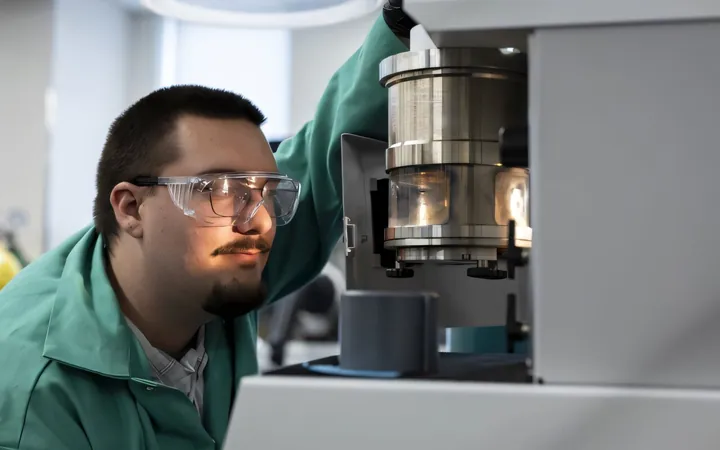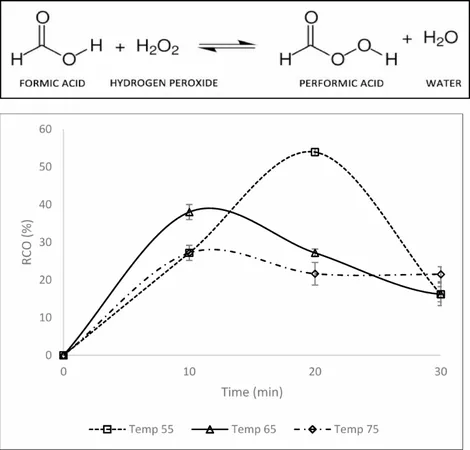
Unlocking the Stars: Revolutionary High-Energy Rocket Fuel Created by Chemists
2025-08-27
Author: Sarah
A Breakthrough in Rocket Fuel Technology
In an exciting development, chemists at the University at Albany have unveiled a groundbreaking high-energy compound that could transform the landscape of rocket fuel, making space missions more efficient than ever before. This innovative fuel promises to release significantly more energy relative to its weight and volume compared to traditional options, allowing rockets to carry less fuel while extending payload capabilities.
"Every inch counts in rocket design; therefore, fuel efficiency is paramount," stated Assistant Professor of Chemistry Michael Yeung, who spearheaded the research. "Our new compound not only minimizes fuel storage needs but also maximizes space for critical equipment and research tools on board. When returning from missions, it could even allow for greater capacity to bring valuable samples back to Earth."
Manganese Diboride: The Future of Propulsion
The newly synthesized compound, manganese diboride (MnB2), boasts over 20% more energy by weight and an astonishing 150% more energy by volume compared to aluminum, the current staple of solid rocket boosters. Despite its impressive energy output, manganese diboride is safe to handle, igniting only upon contact with an ignition source such as kerosene.
The boron-based formulation exhibits versatility, with applications extending beyond rocket fuel. Research from Yeung's lab indicates it could also enhance the durability of catalytic converters and serve as a catalyst in breaking down plastics.
Heating Up Innovation
Manganese diboride belongs to a unique class of compounds known for their peculiar properties. However, previous attempts to study them were hindered by the difficulty of producing the compound. Ph.D. student Joseph Doane remarked, "Diborides gained attention back in the 1960s, but technological advancements are finally allowing us to synthesize these long-speculated compounds.”
Creating manganese diboride requires extreme conditions, involving an arc melter that generates heat upwards of 3,000°C (over 5,000°F). The process starts with compressing manganese and boron powders into a pellet, which the arc melter then rapidly heats and cools to create the desired molecular structure.
Understanding the Unseen Forces
Deciphering a new chemical's characteristics calls for the mapping of its molecular structure. Ph.D. student Gregory John used computational modeling to unveil the unique asymmetrical design of manganese diboride, which contributes to its high energy potential. By visualizing its structure, John explained, "Imagine a cross-section of an ice cream sandwich; the interlocking hexagons in our compound are slightly skewed, which is where its energy is stored.”
The Quest for Exceptional Materials
Chemists agree that boron-based compounds hold the key to unlocking unusual and valuable properties, essential for pushing the boundaries of material science. Associate Professor Alan Chen emphasized, "The pursuit of these compounds lies at the core of materials chemistry, where the creation of tougher and more extreme materials is crucial."
Yeung's enduring fascination with boron compounds began during his graduate studies at UCLA. What started as a quest to discover materials surpassing diamond's hardness transformed into a keen interest in the energetic properties of boron-related compounds—a journey that has culminated in this thrilling new advancement.




 Brasil (PT)
Brasil (PT)
 Canada (EN)
Canada (EN)
 Chile (ES)
Chile (ES)
 Česko (CS)
Česko (CS)
 대한민국 (KO)
대한민국 (KO)
 España (ES)
España (ES)
 France (FR)
France (FR)
 Hong Kong (EN)
Hong Kong (EN)
 Italia (IT)
Italia (IT)
 日本 (JA)
日本 (JA)
 Magyarország (HU)
Magyarország (HU)
 Norge (NO)
Norge (NO)
 Polska (PL)
Polska (PL)
 Schweiz (DE)
Schweiz (DE)
 Singapore (EN)
Singapore (EN)
 Sverige (SV)
Sverige (SV)
 Suomi (FI)
Suomi (FI)
 Türkiye (TR)
Türkiye (TR)
 الإمارات العربية المتحدة (AR)
الإمارات العربية المتحدة (AR)